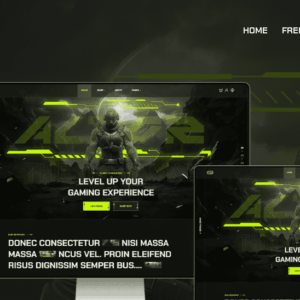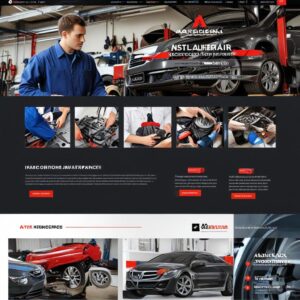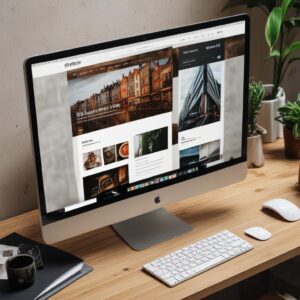
Web Design Portfolio: Showcase Your Work and Attract Clients
Web Design Portfolio
Introduction
In the realm of web design, your portfolio is your most powerful tool. It’s more than just a collection of projects; it’s a digital storefront that showcases your skills, creativity, and ability to transform ideas into captivating online experiences. Your web design portfolio serves as a virtual handshake with potential clients, providing the crucial first impression that can make or break a deal.
The Importance of an Online Portfolio
In today’s digitally driven world, where clients can come from anywhere in the world, having an online portfolio is no longer a luxury; it’s a necessity. It allows your work to be readily accessible to a global audience, establishes your professional presence, and demonstrates your commitment to showcasing your talent in a modern format.
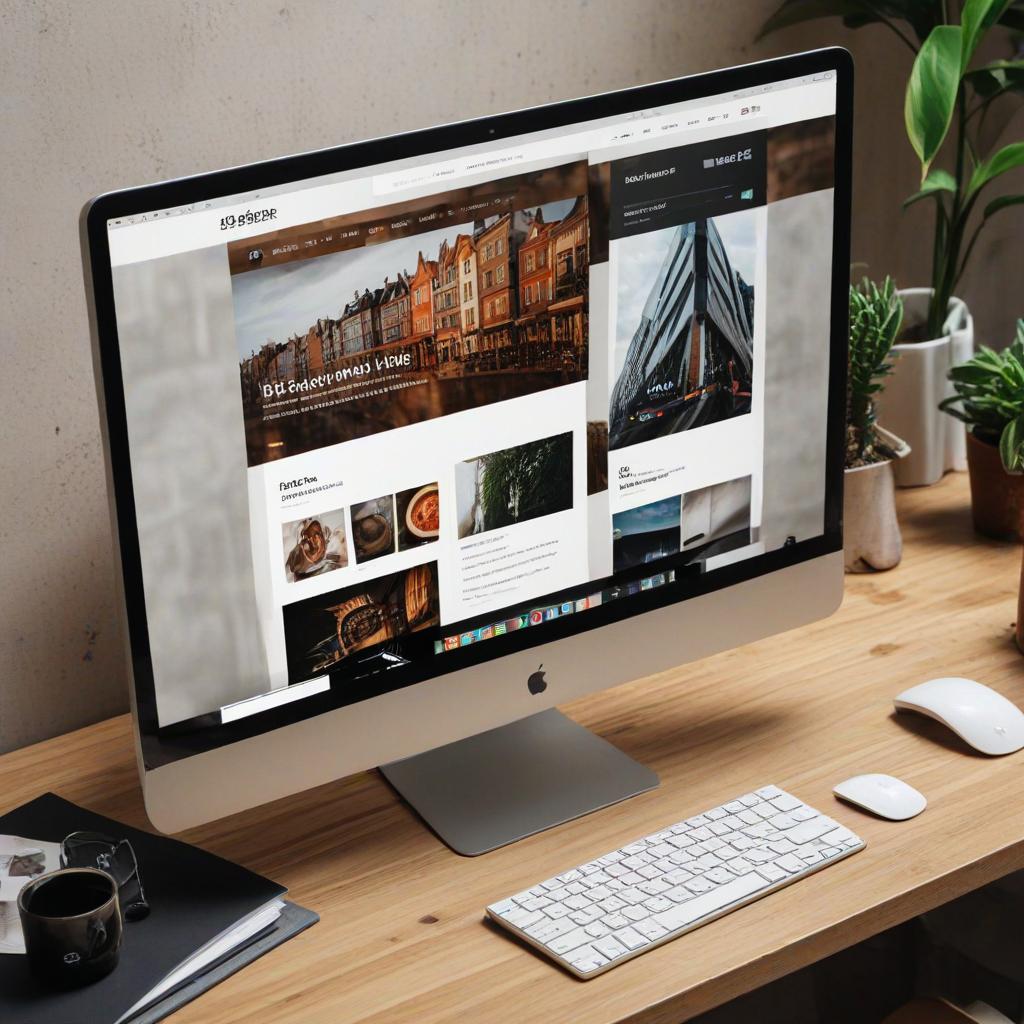
Table of Contents
Building Your Web Design Portfolio
Choosing the Right Platform for Your Web Design Portfolio
Showcasing your web design talent effectively is crucial for attracting clients. Your online portfolio is your digital storefront, where potential clients assess your skills and style. Choosing the right platform to build your portfolio can significantly impact its visibility, functionality, and overall impression.
1. Website Builders: Simplicity and Speed
Website builders like Wix and Squarespace are excellent options for beginners or those seeking a quick and easy setup. These platforms offer intuitive drag-and-drop interfaces, pre-designed templates, and built-in features like hosting and domain registration. They’re ideal for showcasing your work without requiring extensive technical knowledge. However, they might offer less flexibility for highly customized designs.
2. Content Management Systems (CMS): Flexibility and Control
If you desire more control over your portfolio’s design and functionality, a Content Management System (CMS) like WordPress is a powerful choice. CMS platforms offer a wide array of themes and plugins, allowing for extensive customization. While they might have a steeper learning curve, they provide the freedom to create a truly unique and tailored online portfolio that aligns with your brand.
3. Custom-Coded Sites: Expertise and Distinction
For web designers with advanced development skills, building a custom-coded portfolio website can be a testament to your expertise. This option offers unparalleled flexibility, allowing you to craft every detail precisely. However, it requires significant technical know-how and time investment. If you’re not a developer, consider collaborating with one to bring your vision to life.
Choosing the Best Fit for You
The ideal platform depends on your technical skills, budget, desired level of customization, and long-term goals. Consider factors like:
- Ease of Use: How comfortable are you with website building tools?
- Customization: Do you need a highly tailored design or will pre-designed templates suffice?
- Budget: What resources are available for website creation and maintenance?
- Technical Skills: Can you handle coding or would you prefer a visual editor?
- Future Growth: Will the platform accommodate your evolving needs as your business grows?
Key Elements of an Effective Portfolio
Crafting an Irresistible Web Design Portfolio
Your online portfolio is your digital storefront, the first impression potential clients have of your skills and expertise. It’s a crucial tool to showcase your work, attract clients, and secure lucrative projects. Let’s delve into the key elements that will make your portfolio stand out:
Homepage: Make a Lasting First Impression
Your homepage is the virtual welcome mat of your portfolio. A visually stunning design that reflects your aesthetic sensibility instantly grabs attention. Use high-quality images, captivating typography, and an intuitive layout to create an engaging user experience. A concise introduction that highlights your specialization (e.g., “Award-winning web designer specializing in e-commerce solutions”) and a clear call to action (e.g., “View my work”) will guide visitors deeper into your portfolio.
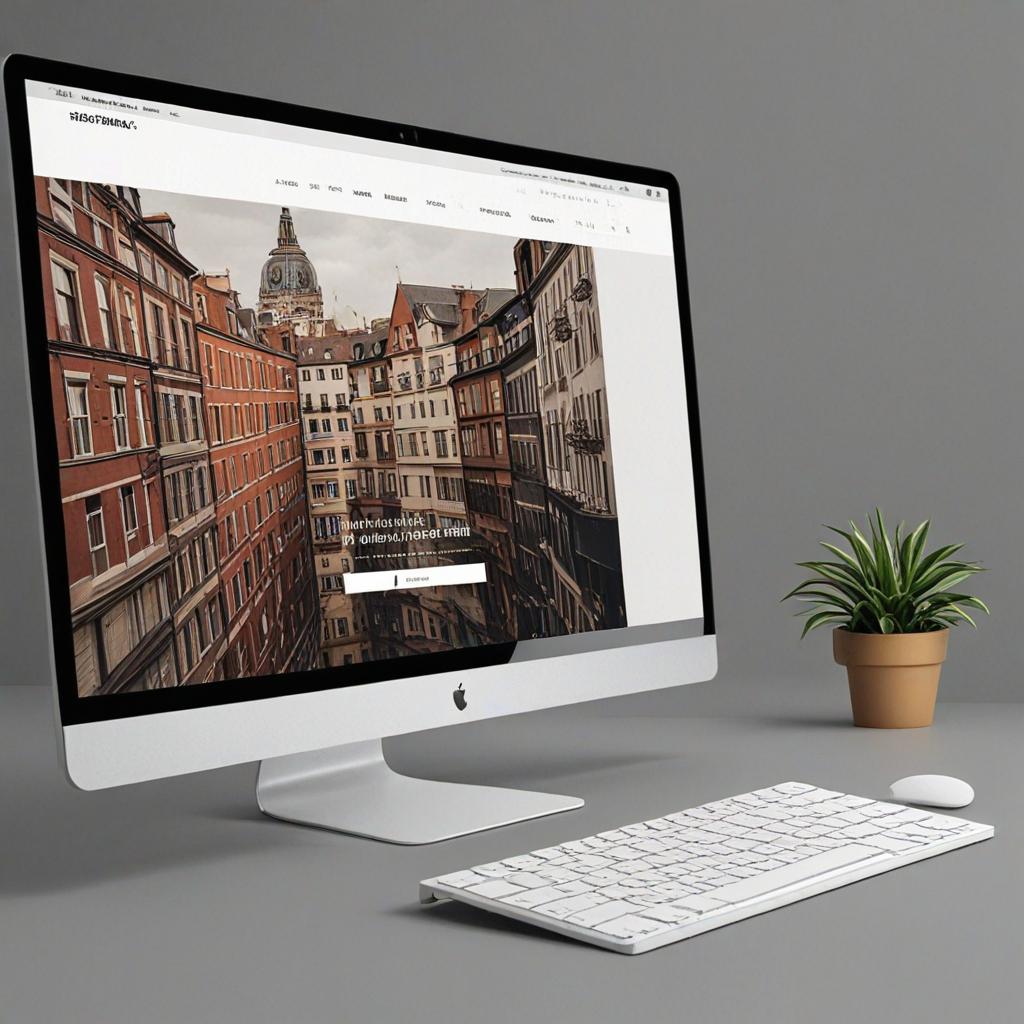
About Page: Tell Your Story and Showcase Your Expertise
The About page is where you connect with potential clients on a personal level. Share your design philosophy, your passion for the craft, and the unique skills you bring to the table. Highlight your experience, education, and any relevant awards or recognition. Use a conversational tone to make your story relatable and engaging. Remember, clients are not just hiring your skills; they’re investing in your vision and approach.
Portfolio Showcase: Let Your Work Shine
Your portfolio is the heart of your online presence. Showcase your best projects prominently, using high-quality images, videos, or interactive demos. Provide detailed descriptions of each project, outlining the challenges you faced, the solutions you implemented, and the results you achieved. Organize your portfolio logically, categorizing projects by type, industry, or technology to help visitors easily find what they’re looking for.
Contact Information: Make it Easy to Connect
The ultimate goal of your portfolio is to convert visitors into clients. Make your contact information readily accessible with clear calls to action on every page. Include your email address, phone number, and links to your social media profiles. Consider adding a contact form for a streamlined inquiry process. Respond promptly to all inquiries to demonstrate your professionalism and eagerness to collaborate.
By incorporating these key elements into your web design portfolio, you create a powerful online portfolio that not only showcases your skills but also attracts clients who resonate with your work and approach. Remember, your portfolio is a dynamic representation of your evolving expertise, so keep it updated with your latest projects and achievements to maintain a competitive edge in the market.
Showcasing Your Work: Building a Compelling Web Design Portfolio to Attract Clients
Your web design portfolio serves as your digital storefront, a curated collection of your best work that showcases your skills, creativity, and expertise to potential clients. A well-crafted online portfolio not only attracts attention but also plays a crucial role in converting visitors into paying clients.
Project Selection: Demonstrating Your Versatility
When selecting projects for your portfolio, aim for diversity. Include a variety of projects that demonstrate your versatility in different styles, industries, and technologies. This could include websites, landing pages, mobile apps, or even design concepts. By showcasing a range of work, you appeal to a broader audience and demonstrate your adaptability.
Project Descriptions: Clear, Concise, and Impactful
For each project, craft clear, concise summaries that highlight the project goals, your specific role, and the results achieved. Use language that’s easily understandable by potential clients, even if they don’t have a technical background. Consider quantifying your results whenever possible (e.g., “Increased website traffic by 25%”).
Visuals: Bringing Your Projects to Life
High-quality visuals are essential for any web design portfolio. Use high-resolution images, videos, or even interactive demos to showcase your work. Consider using tools like before-and-after sliders to illustrate the impact of your design. Make sure your visuals are optimized for fast loading times, as slow-loading pages can deter visitors.
Case Studies (Optional): Deep Dive into Your Process
For complex or particularly impactful projects, consider creating in-depth case studies. These can delve deeper into your design process, explaining your research, challenges faced, solutions implemented, and the overall impact of your work. Case studies offer a behind-the-scenes look at your expertise and can be very persuasive for potential clients.
By carefully curating your web design portfolio, crafting compelling project descriptions, and utilizing high-quality visuals, you’ll create a powerful marketing tool that not only showcases your skills but also attracts and engages potential clients. Remember, your portfolio is a dynamic representation of your evolving expertise, so keep it updated with your latest and greatest work.
Attracting Clients with Your Online Portfolio
Strategies to Elevate Your Web Design Portfolio
- Search Engine Optimization (SEO): Optimize your online portfolio for relevant keywords like “web designer,” “[your city] web design,” and “[your niche] website design.” This will help your portfolio rank higher in search engine results, making it more discoverable to potential clients actively searching for web design services.
- Social Media Promotion: Share your portfolio across your social media platforms, such as LinkedIn, Twitter, Facebook, and Instagram. Engage with design communities and relevant hashtags to increase your visibility and connect with potential clients.
- Networking: Attend industry events, join online forums and groups, and participate in discussions related to web design. Building relationships with other professionals and potential clients can lead to valuable referrals and collaborations.
- Client Testimonials: Showcase positive feedback and testimonials from past clients on your website and portfolio. These testimonials serve as social proof, building credibility and trust with potential clients who are considering your services.
By implementing these strategies, you’ll enhance the visibility of your web design portfolio, attract more clients, and ultimately drive the growth of your business. Remember, your portfolio is a dynamic representation of your skills and expertise. Keep it updated with your latest projects, refine your SEO approach, and engage with your audience to stay top-of-mind in the competitive web design landscape.
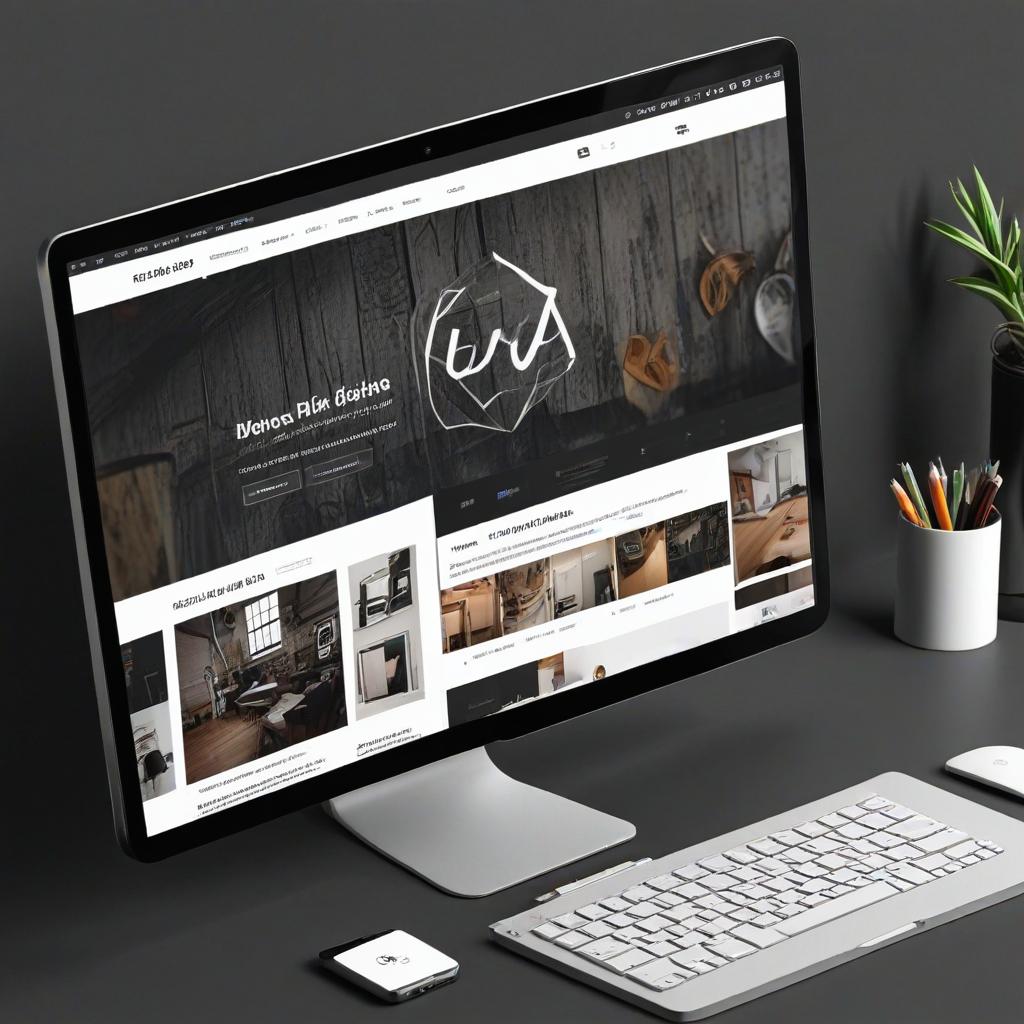
Tips for a Standout Web Design Portfolio
Crafting a Web Design Portfolio that Attracts Clients
Your web design portfolio serves as your digital storefront, showcasing your skills, creativity, and professionalism to potential clients. It’s your opportunity to make a lasting impression and secure exciting projects. To create an online portfolio that truly stands out and attracts clients, consider these essential tips:
- Keep it Updated: Regularly refresh your portfolio with your latest and greatest work. This demonstrates your ongoing growth as a designer and keeps your portfolio relevant to current design trends.
- Mobile Responsiveness: In today’s mobile-centric world, it’s imperative that your portfolio looks stunning and functions flawlessly on all devices, from smartphones to tablets to desktops. A seamless mobile experience enhances user engagement and leaves a positive impression.
- User-Friendly Navigation: Design a clear and intuitive navigation structure that allows visitors to easily explore your work. Use descriptive labels, categories, and filtering options to help them quickly find projects that align with their interests.
- Personal Branding: Infuse your unique personality and design style into your portfolio. Whether it’s through color choices, typography, or the overall aesthetic, let your brand shine through to create a memorable and cohesive experience for visitors.
- Compelling Project Descriptions: Craft concise yet informative project descriptions that highlight the challenges, solutions, and results you achieved. Use storytelling to convey the impact of your work and showcase your expertise.
- Call to Action: Don’t leave potential clients wondering how to contact you. Include a clear and prominent call to action on each project page, inviting them to inquire about your services. This could be a “Contact Me” button, a form, or your email address.
By following these tips, you’ll create a web design portfolio that not only showcases your skills but also effectively communicates your value proposition to potential clients. Remember, your portfolio is a dynamic representation of your work, so make sure it evolves alongside your career and continues to attract the clients you desire.
Conclusion
Your web design portfolio is more than a showcase of your skills; it’s your most powerful marketing tool in the digital realm. A well-crafted online portfolio not only displays your creative talent but also communicates your professionalism, expertise, and ability to meet client needs. It’s your virtual storefront, inviting potential clients to explore your work and envision the possibilities for their own projects.
By investing time and effort into creating a compelling portfolio, you’re not just building a collection of past work; you’re building your brand, establishing your reputation, and positioning yourself for success. An effective portfolio can attract clients who resonate with your style, align with your values, and ultimately become your biggest advocates.
Take Action Today: Craft Your Portfolio for Success
Don’t wait to start building your online portfolio. Every project you complete, every skill you hone, is an opportunity to enhance your showcase. Choose a platform that aligns with your aesthetic and technical preferences, curate your best work, and present it in a way that highlights your unique strengths.
Remember, your portfolio is a dynamic representation of your evolving expertise. Update it regularly with new projects, testimonials, and any additional skills you acquire. Share it across your online platforms, include it in your proposals, and actively promote it to potential clients.
FAQs (Frequently Asked Question)
Why do I need a web design portfolio?
A web design portfolio is your online resume. It’s a visual representation of your skills and experience, showcasing your ability to create beautiful, functional websites. It’s the most effective way to attract potential clients and land new projects.
What should I include in my web design portfolio?
Your portfolio should include your best work, demonstrating your versatility and expertise. Select a variety of projects that highlight your design skills, problem-solving abilities, and understanding of user experience. Be sure to include high-quality visuals, concise descriptions, and any relevant case studies.
Which platform should I use to create my online portfolio?
The platform you choose depends on your budget, technical skills, and desired level of customization. Popular options include website builders like Wix and Squarespace, content management systems like WordPress, or custom-coded sites if you have the expertise.
How can I attract clients with my web design portfolio?
To attract clients, optimize your portfolio for search engines (SEO) using relevant keywords like “web designer” or “[your location] web design.” Share your portfolio on social media, network with other designers and potential clients, and consider featuring client testimonials to build trust and credibility.
How often should I update my web design portfolio?
It’s crucial to keep your portfolio updated regularly. Add new projects as you complete them to showcase your latest work and skills. An outdated portfolio may give the impression that you’re not actively working or that your skills are not current.
Is it important for my web design portfolio to be mobile-friendly?
Absolutely! Many people browse the web on their smartphones and tablets. A mobile-responsive portfolio ensures that your work looks great on all devices, providing a positive user experience for potential clients.
Should I include personal projects in my web design portfolio?
Including personal projects can be a great way to showcase your passion and creativity, especially if you’re just starting. However, prioritize client work as it demonstrates your ability to meet real-world design needs.
How can I make my web design portfolio stand out?
To make your portfolio stand out, focus on clear navigation, a visually appealing design, and compelling project descriptions. Infuse your personality and unique design style into your portfolio, making it a memorable experience for visitors.
Do I need to include prices for my web design services in my portfolio?
It’s not necessary to list specific prices in your portfolio. However, you can offer a general idea of your pricing structure or provide a contact form for potential clients to request quotes.
What if I don’t have many client projects to showcase yet?
If you’re starting, you can include personal projects, volunteer work, or even design concepts you’ve created for hypothetical scenarios. The key is to demonstrate your skills and creativity. As you gain more client experience, replace these with real-world examples.
Should I include a blog in my web design portfolio?
Adding a blog to your portfolio can be a great way to share your design insights, industry knowledge, and latest trends. It can also help with SEO and attract potential clients who are interested in your thoughts and expertise.
Can I use a template for my web design portfolio?
While templates can be a quick and easy starting point, consider customizing them to reflect your unique style and branding. A personalized portfolio will make a stronger impression on potential clients.
How can I protect my web design work in my portfolio?
You can add watermarks to your images or use low-resolution versions to prevent unauthorized use. Additionally, include copyright notices and terms of use to clarify ownership of your work.
Should I include a downloadable resume in my web design portfolio?
It’s a good idea to include a link to a downloadable resume or CV in your portfolio, especially if you’re actively seeking employment. This provides potential employers with a comprehensive overview of your skills and experience.
I need Services with …
- Wordpress Service
- Shopify Service
- Youtube Service
- Cv and resume Service
- Linkedin Service
Latest Post
-
Top Daily Taste WordPress Theme: Best Choice for Your Site
$ 15Original price was: $ 15.$ 13Current price is: $ 13. Add to cartAdd to WishlistAdd to Wishlist -
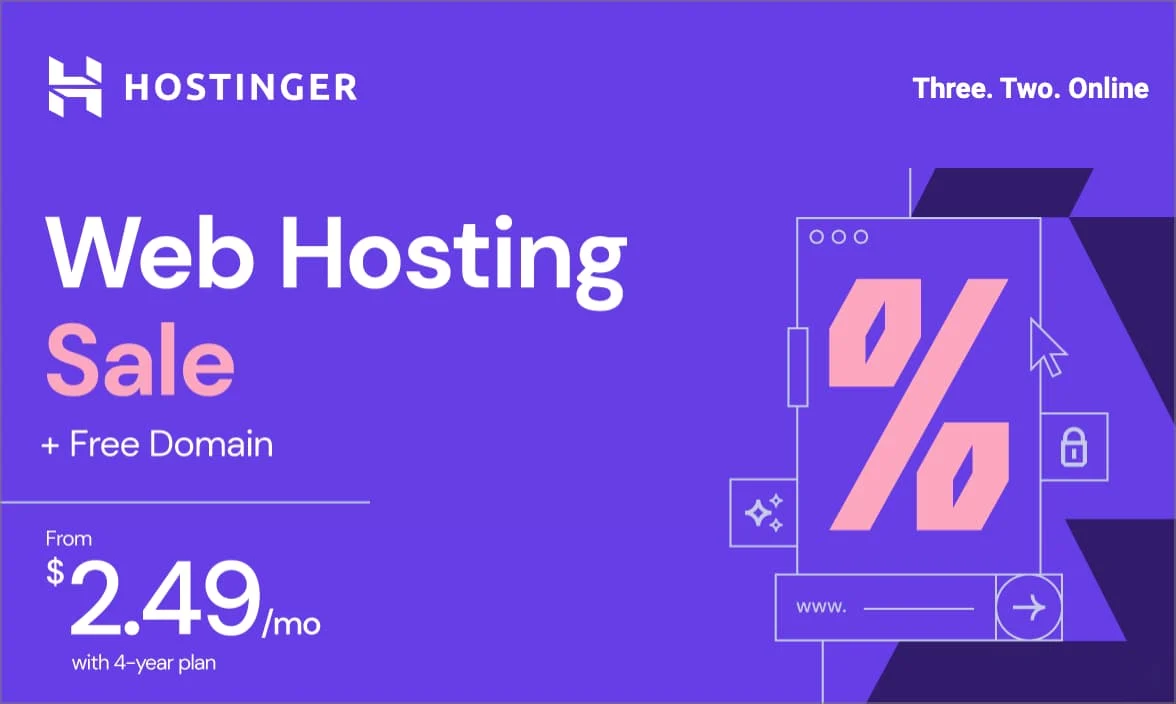
Get Hostinger’s Low-Cost Hosting Now!
Don’t miss out on affordable hosting with Hostinger – click now to bring your website online at an unbeatable price!



